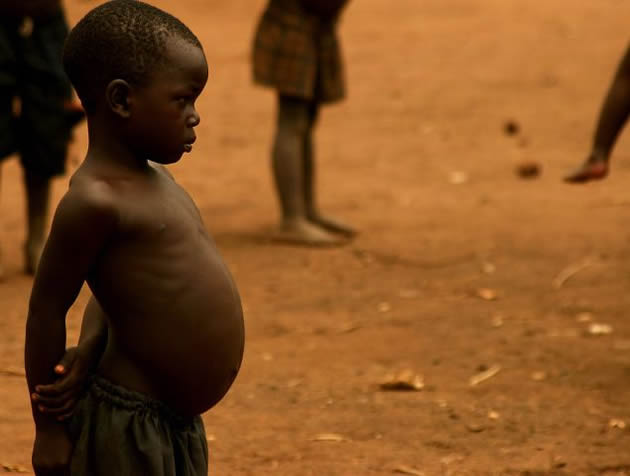EDITORIAL COMMENT: Boost food security to defeat kwashiorkor

Kwashiorkor is now largely extinct in many parts of the world, thanks to advances in food and nutrition and socio-economic standards of people over the past few decades.
Closely associated with famine and extreme poverty, it affects mainly children. It is a result of severe malnutrition or chronic hunger, that is to say the child with that condition is perpetually hungry or that their stomachs might be full, but full of nutrient-deficient food, particularly lacking protein.
Kwashiorkor is an intensely embarrassing disease. Not that the suffering kids and their resource-poor parents must feel embarrassed, but we collectively as Zimbabweans.
Chronic hunger, homelessness and lack of clothing are dehumanising conditions. That is why access to sufficient and nutritious food, shelter and clothing are basics that every human being must always enjoy.
Kwashiorkor was common in the first few years of independence up to the 1992 drought. Then it was pervasive countrywide as food vulnerability affected a large proportion of the population.
Yesterday, we carried a sad story of its prevalence in Gwanda. Though the report is localised to that district and may not qualify to be regarded as a resurgence, we are alarmed that some among us are so food-insecure that their children are suffering from kwashiorkor, one of the diseases that define poverty.
At the same time, we are reminded about the lasting impact of recurring droughts in that province and also the illegal sanctions that have curtailed the government’s ability to feed vulnerable citizens.
Gwanda district nursing officer Filter Sibanda said people in the area survive on one meal per day and appealed for urgent food aid. The kwashiorkor prevalence rate is about 6-10 percent which, she said, is considered too high. Samu Dube’s child is suffering from the disease, according to the report. She and her husband are unemployed and are struggling to get enough healthy food.
Defining symptoms of kwashiorkor include swelling of the ankles and feet, big belly, thinning hair, loss of teeth, skin depigmentation and stunted growth. Children with kwashiorkor often develop irritability and anorexia, an eating disorder that makes people lose more weight than is considered healthy for their age and height. Untreated kwashiorkor can impair a child’s physical and mental development, and in severe cases may be fatal.
We recognise the government’s efforts to enhance food security among the people. That one of the four pillars of Zim-Asset is food and nutrition demonstrates that authorities see a challenge in that area and a commitment to making sure that people access nutritious food to prevent diseases such as kwashiorkor. The other Zim-Asset pillar, social services and poverty eradication is geared towards the same objective.
The government, as we said, is seized with creating the environment for greater food security, so we encourage parents to be vigilant on the health of their children. The health delivery system must quickly detect malnutrition and manage it. Development partners are encouraged to help with supplementary feeding for children from vulnerable households and implementing programmes to raise awareness to eradicate hunger.
However, empowering communities to produce or acquire food on their own is most sustainable.
Matabeleland South is an area of concern in regard to its poor food and nutritional standards and their long-term effects on the health of its population, and even professional advancement of people from that province.
In September 2011, Zimbabwe National Army Commander; Lieutenant-General Philip Valerio Sibanda said many aspiring soldiers from that province did not meet recruitment requirements after failing to meet the mandatory body mass index (BMI) due to poor nutrition.
He said the province had the least number of successful candidates in a recruitment exercise that had been conducted there a few weeks earlier.
“This year, we had a reduced number of army recruits from Matabeleland South because most of the candidates who applied for military training did not meet the required body mass index in line with ZNA requirements. This is largely because of food shortages affecting several households in the province,” he said on a visit to Gwanda to donate farm inputs to traditional leaders in Matabeleland South.
The BMI is used to assess how much an individual’s body weight departs from what is normal or desirable for a person of his or her height. A 1,9m tall aspiring soldier will fail the recruitment test if he weighs only 40kg, for example.
We have no reports of kwashiorkor for other provinces, but with economic challenges of the past decade, worsened by food shortages caused by recurrent droughts in marginal districts — Binga, Hwange, Gwanda, Chiredzi, Bulilima, Mangwe, Nkayi, Mberengwa, southern Zaka, Kusile, Buhera, southern Bikita, Tsholotsho and Uzumba – we must guard against a possible wider resurgence of the disease.
There is much urban unemployment and poverty, so it is possible kwashiorkor is afflicting children in towns and cities as well.









Comments